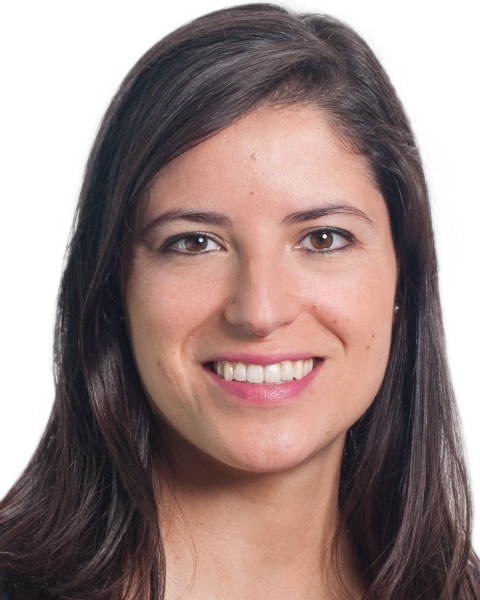Treatment of Newly Diagnosed Myeloma - Non-Transplant Eligible
Poster Session 1
P-114: In-class transition (iCT) from parenteral bortezomib (V) to oral ixazomib in multiple myeloma (MM) by age and frailty status: Updated subgroup analysis from the fully accrued US MM-6 study
Wednesday, September 27, 2023
1:30 PM - 2:30 PM EEST


Isabel Ferreira, PharmD, PhD
Global Scientific Director
Takeda Pharmaceuticals International AG, Zurich, Switzerland
Introduction: Long-term proteasome inhibitor (PI) therapy can improve outcomes for patients (pts) with MM, but is challenging in routine practice. This is due to PI-related toxicity and administration burden, particularly for elderly/frail pts who are often transplant ineligible. For such pts, it is important to prolong progression-free survival (PFS) and to improve depth/duration of response. The prospective, community-based, phase 4 US MM-6 study investigated in-class transition (iCT) from parenteral V-based induction to all-oral ixazomib-lenalidomide-dexamethasone (IRd) in pts with newly diagnosed MM (NDMM; NCT03173092).
Methods: Following 3 cycles of V-based induction, eligible pts with NDMM were enrolled to receive up to 39 cycles of IRd. The primary endpoint was 2-year PFS. Secondary endpoints included treatment duration, overall response rate (ORR), overall survival (OS), and safety. Endpoints were assessed by age ( < 75 vs ≥75 years [yrs]) and frailty status (non-frail vs frail).
Results: At datacut (Oct 17, 2022), 140 pts had received IRd ; 42% were aged ≥75 yrs (median age: 73 yrs) and 61% were frail. Overall median follow-up was 27 months (mos). For pts aged < 75 vs ≥75 yrs and for non-frail vs frail pts, 12 vs 7% and 13 vs 8% were ongoing on IRd, respectively. Median duration of IRd was 11 mos overall, 14 vs 9 mos in pts aged < 75 vs ≥75 yrs, and 12 vs 10 mos in non-frail vs frail pts. Overall median duration of all PI-based therapy was 14 mos, 18 vs 12 mos in pts aged < 75 vs ≥75 yrs, and 15 vs 13 mos in non-frail vs frail pts. ORR increased from 62% at the end of induction (including complete response [CR]: 8%) to 80% (including CR: 37%) following iCT to IRd; for pts aged < 75 vs ≥75 yrs, ORR increased from 60 to 80% vs 64 to 80%; and in non-frail vs frail subgroups, ORR increased from 70 to 81% vs 57 to 79%. The overall 2-year PFS rate was 71% (95% confidence interval [CI]: 61–78), 72% (95% CI: 60─81) vs 67% (95% CI: 50─80) in pts aged < 75 vs ≥75 yrs, and 74% (95% CI: 58─85) vs 68% (95% CI: 55─78) in non-frail vs frail pts; differences were not significant. Median PFS and OS were not reached overall, nor in any subgroup. Overall, 98% of pts experienced ≥1 treatment-emergent adverse event (TEAE; 69% grade ≥3; 44% serious TEAEs ). For pts aged < 75 vs ≥75 yrs, 69 vs 68% experienced a grade ≥3 TEAE; serious TEAEs occurred in 42 vs 47%; TEAEs leading to dose modification occurred in 67 vs 66%; and 2 pts died in each subgroup. For non-frail vs frail subgroups, 61 vs 73% experienced a grade ≥3 TEAE; serious TEAEs occurred in 39 vs 48%; TEAEs leading to dose modification occurred in 61 vs 70%; and 1 vs 3 pts died, respectively.
Conclusions: iCT from V-based induction to all-oral IRd permits prolonged PI-based therapy and improves depth of response, with a tolerable safety profile, including in elderly/frail pts. For such pts, IRd may be an alternative to induction/maintenance.
Methods: Following 3 cycles of V-based induction, eligible pts with NDMM were enrolled to receive up to 39 cycles of IRd. The primary endpoint was 2-year PFS. Secondary endpoints included treatment duration, overall response rate (ORR), overall survival (OS), and safety. Endpoints were assessed by age ( < 75 vs ≥75 years [yrs]) and frailty status (non-frail vs frail).
Results: At datacut (Oct 17, 2022), 140 pts had received IRd ; 42% were aged ≥75 yrs (median age: 73 yrs) and 61% were frail. Overall median follow-up was 27 months (mos). For pts aged < 75 vs ≥75 yrs and for non-frail vs frail pts, 12 vs 7% and 13 vs 8% were ongoing on IRd, respectively. Median duration of IRd was 11 mos overall, 14 vs 9 mos in pts aged < 75 vs ≥75 yrs, and 12 vs 10 mos in non-frail vs frail pts. Overall median duration of all PI-based therapy was 14 mos, 18 vs 12 mos in pts aged < 75 vs ≥75 yrs, and 15 vs 13 mos in non-frail vs frail pts. ORR increased from 62% at the end of induction (including complete response [CR]: 8%) to 80% (including CR: 37%) following iCT to IRd; for pts aged < 75 vs ≥75 yrs, ORR increased from 60 to 80% vs 64 to 80%; and in non-frail vs frail subgroups, ORR increased from 70 to 81% vs 57 to 79%. The overall 2-year PFS rate was 71% (95% confidence interval [CI]: 61–78), 72% (95% CI: 60─81) vs 67% (95% CI: 50─80) in pts aged < 75 vs ≥75 yrs, and 74% (95% CI: 58─85) vs 68% (95% CI: 55─78) in non-frail vs frail pts; differences were not significant. Median PFS and OS were not reached overall, nor in any subgroup. Overall, 98% of pts experienced ≥1 treatment-emergent adverse event (TEAE; 69% grade ≥3; 44% serious TEAEs ). For pts aged < 75 vs ≥75 yrs, 69 vs 68% experienced a grade ≥3 TEAE; serious TEAEs occurred in 42 vs 47%; TEAEs leading to dose modification occurred in 67 vs 66%; and 2 pts died in each subgroup. For non-frail vs frail subgroups, 61 vs 73% experienced a grade ≥3 TEAE; serious TEAEs occurred in 39 vs 48%; TEAEs leading to dose modification occurred in 61 vs 70%; and 1 vs 3 pts died, respectively.
Conclusions: iCT from V-based induction to all-oral IRd permits prolonged PI-based therapy and improves depth of response, with a tolerable safety profile, including in elderly/frail pts. For such pts, IRd may be an alternative to induction/maintenance.
